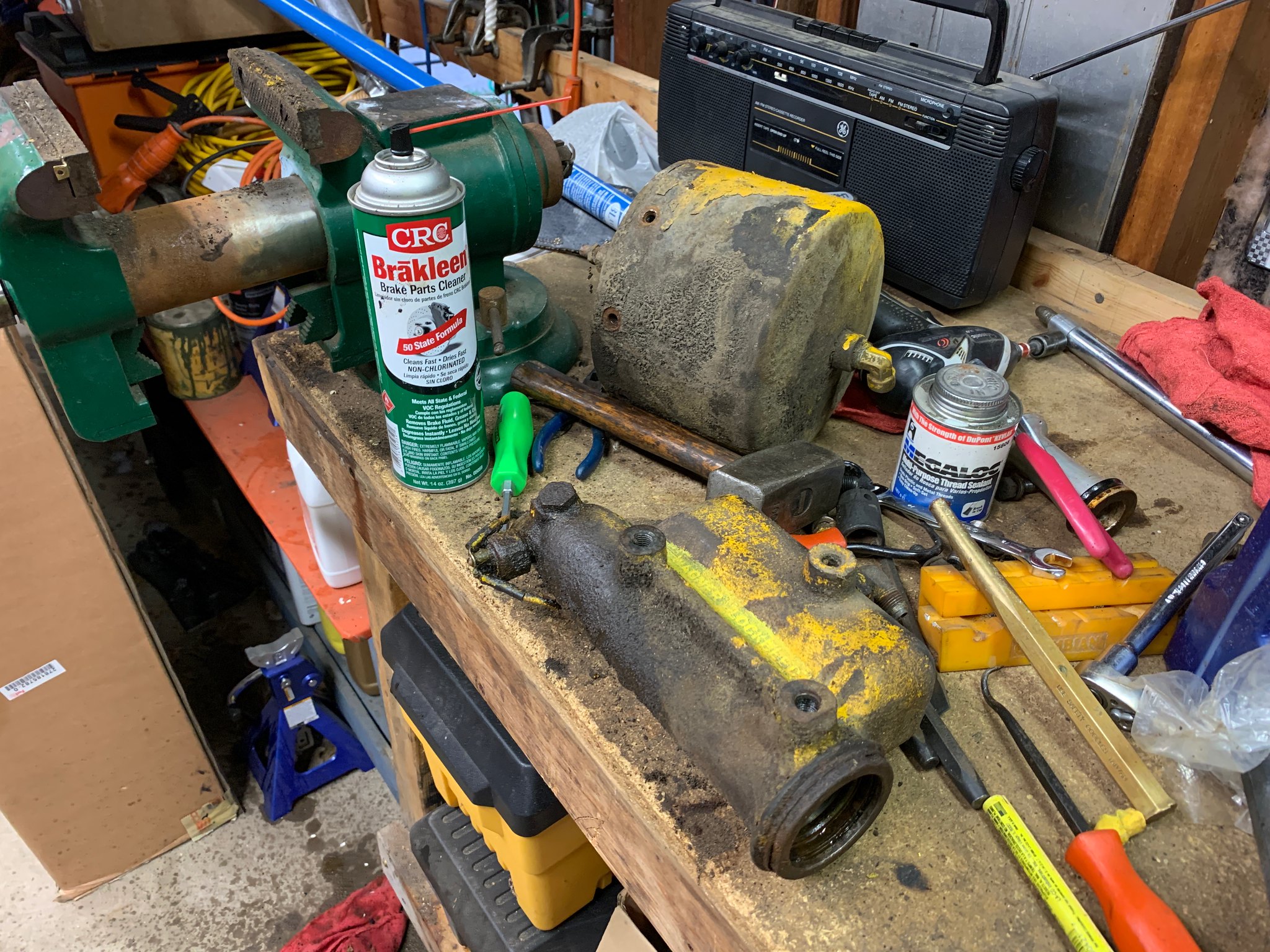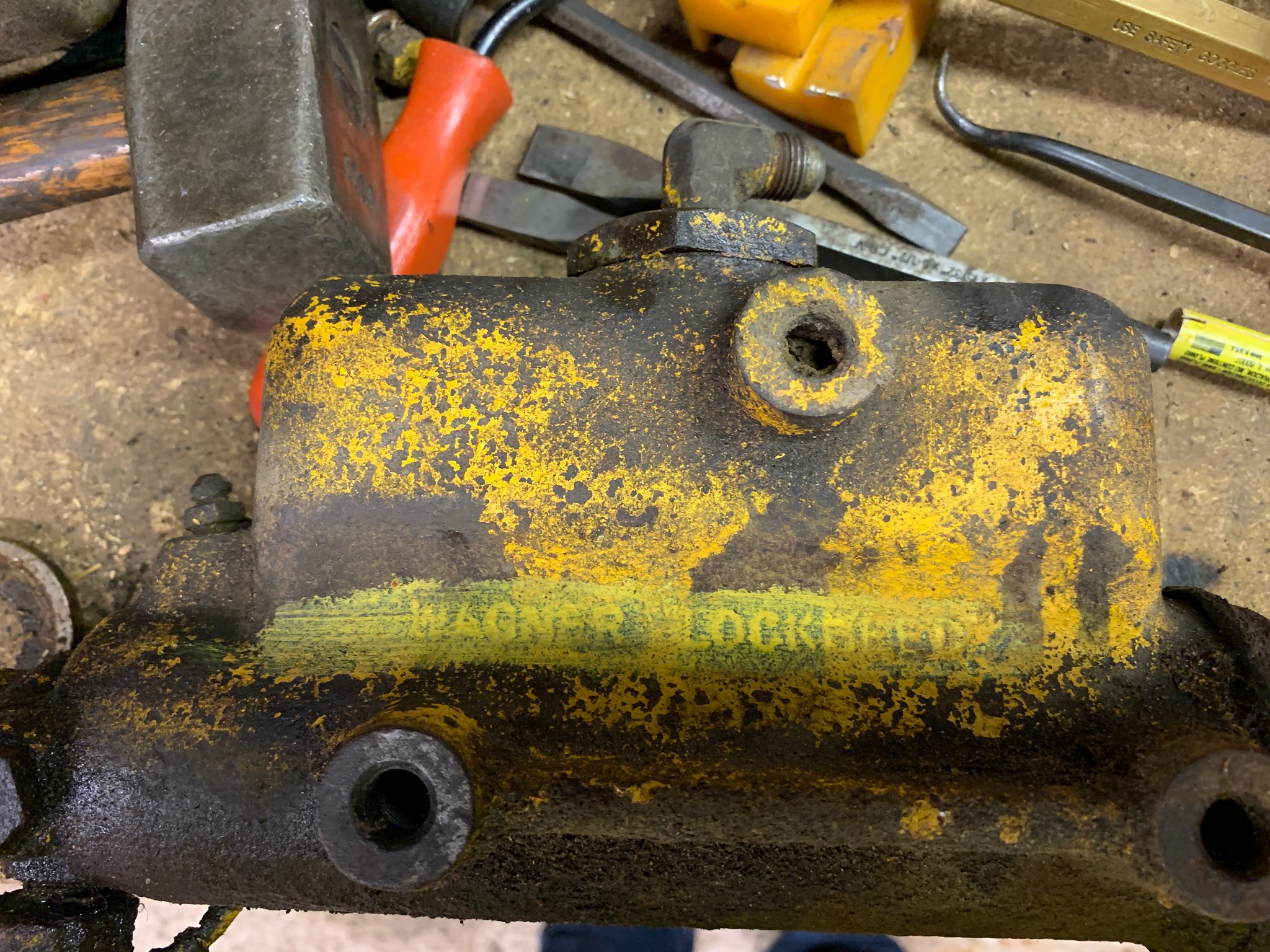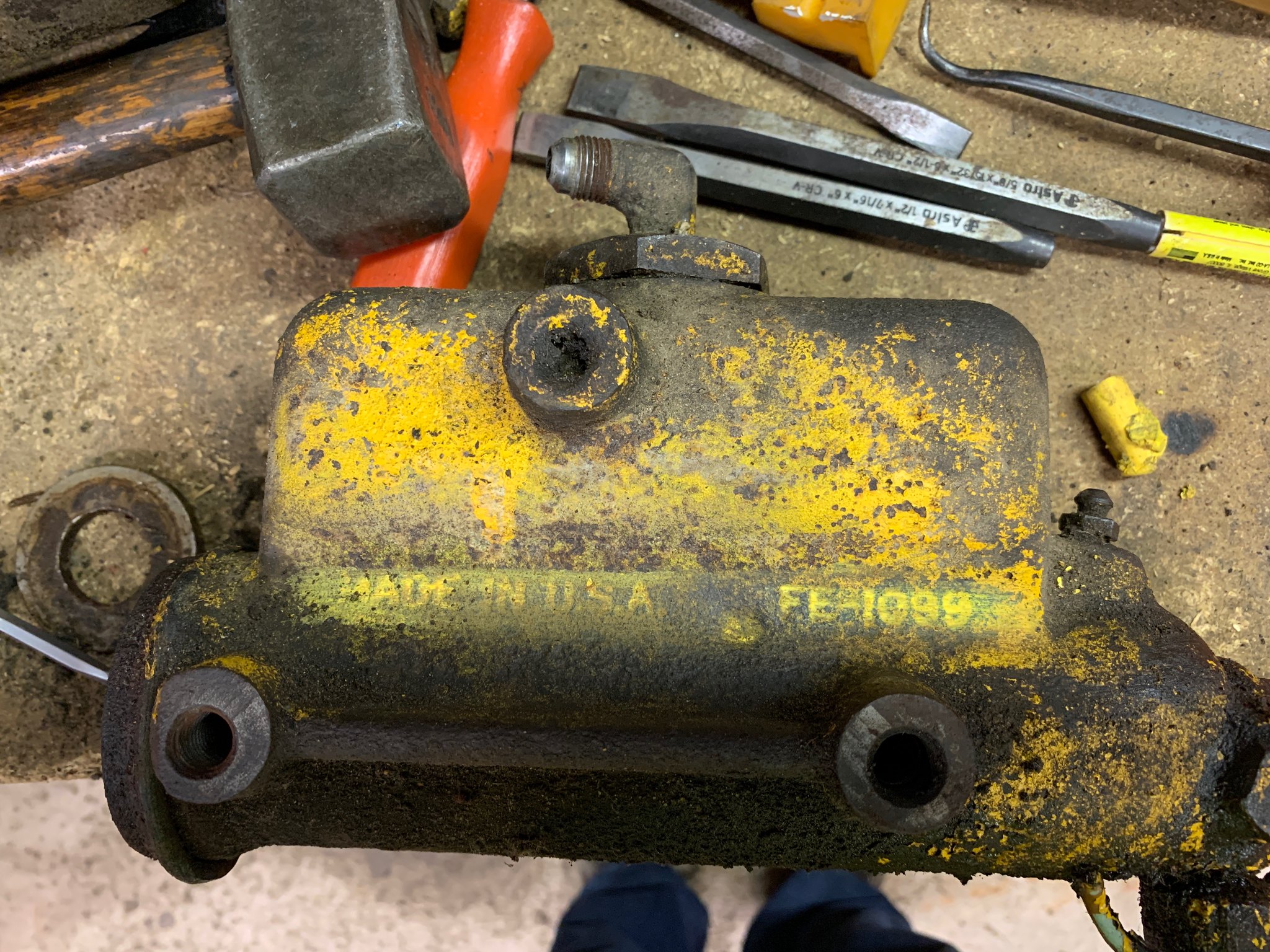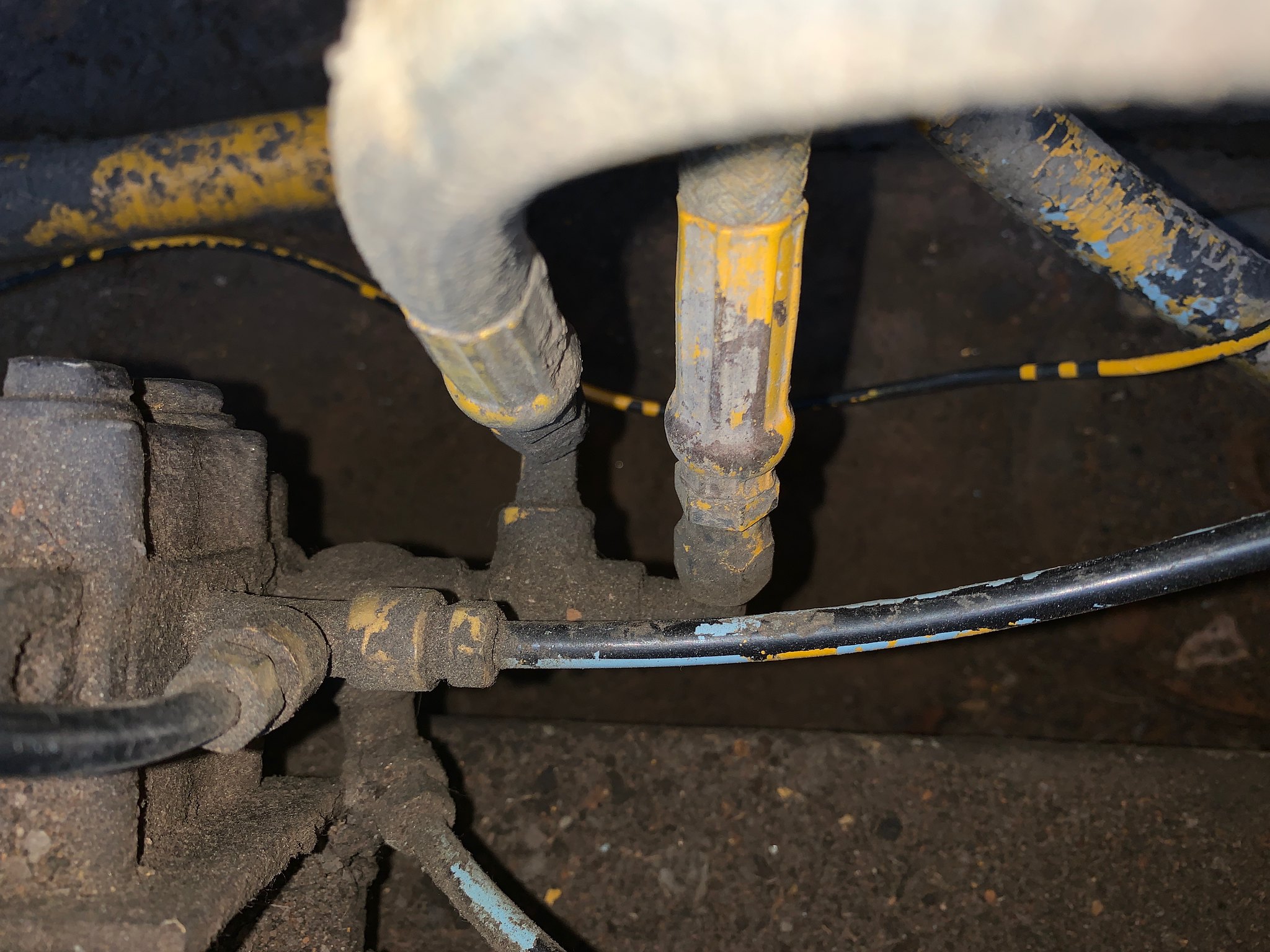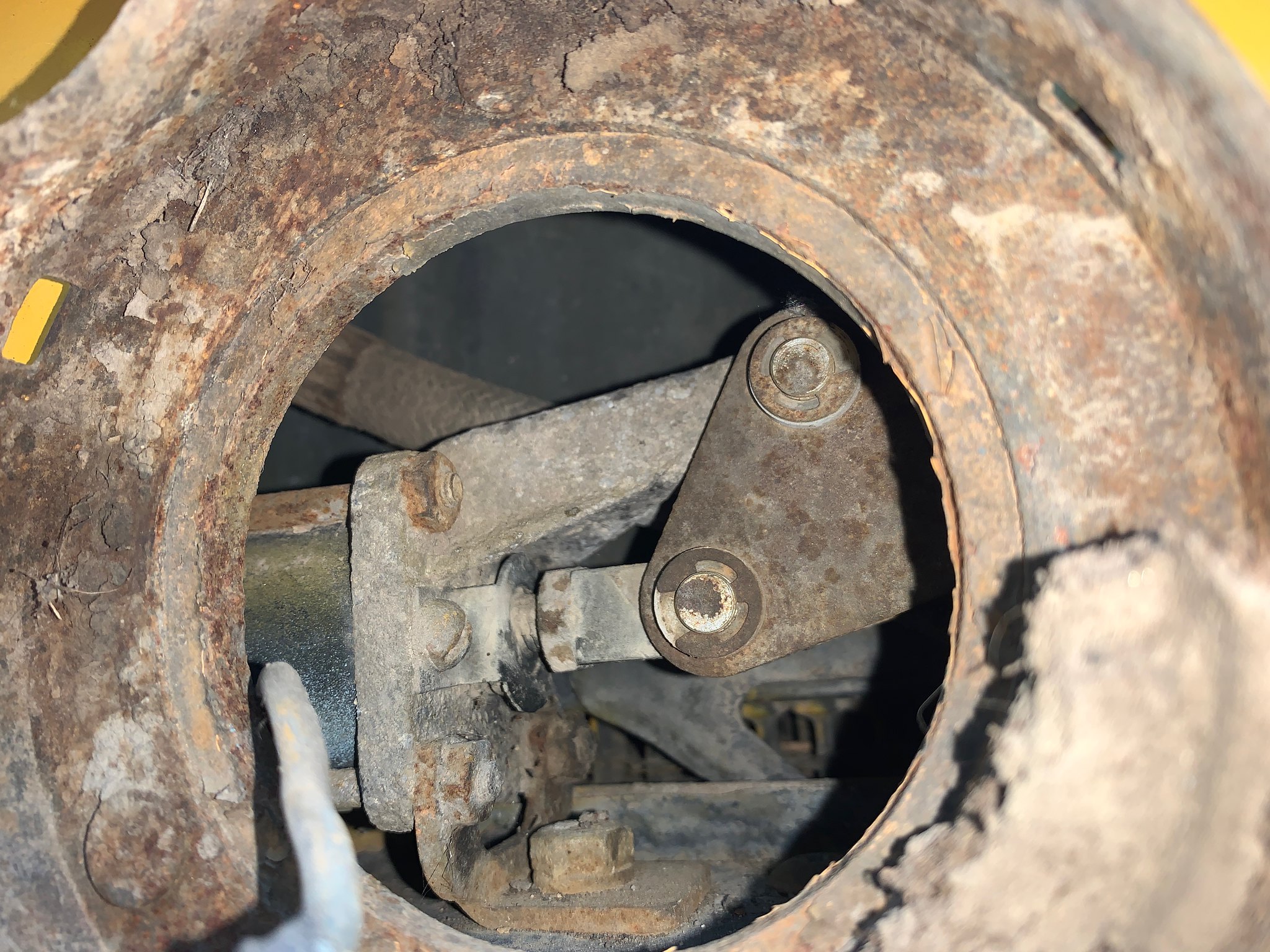Minnesota Eric
Well-Known Member
I always liked to see a machine sit at least over night without loosing, say 25 psi. Actually recall an old Euclid I worked on that we parked the truck and pulled engine for overhaul and when we came back to install engine it was still showing air pressure on gauge before stating rebuilt engine!
Kshansen,
It appears that my powers clusters are shelled. I have air leaking through the air pistons into the master cylinders hissing all the way up to the remote reservoir. My power clusters appear to be old Wagner 840 with a 4"x7" air piston. I have not removed them to confirm the master cylinder bore and stroke. I'm being quoted anywhere from $1400 all the way down to $530 each. $1400 gets me OEM rebuilds and $530 gets me an equivalent that is nowadays used on thripple axle trailers and the like and is sold by a company that got tired of trying to track down old Wagner cores.
A rebuilt OEM vender has pushed back claiming that the modern equivalent will not work because the master cylinder is different (as in bore and stroke) but the Brake company with the aftermarket solution says that there are only about six different versions of these things, and is confident of the sizing given the known size of the air piston housing.
Can your experience shed any light on this?
Thanks!
Modern equivalent https://www.fleet-products.ca/65-840-air-hydraulic-actuator/
OEM vender https://www.andersonequip.com/web/files/prod/web/parts/PN-KAC_1126328C92.html
Auto parts store: https://www.oreillyauto.com/detail/...6f8/brakebest-hd-power-cluster/a88862/2543528

